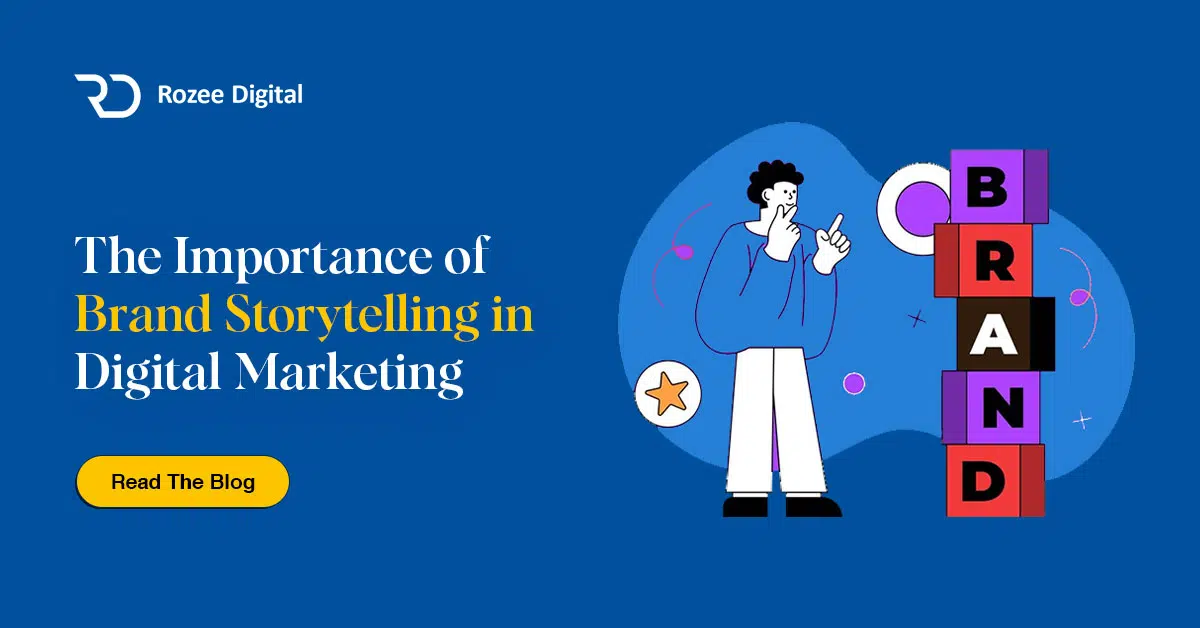The Power of Ad Creative Messaging
In the realm of ecommerce, ad creative messaging plays a pivotal role in capturing the attention of potential customers and driving them to take action. Crafting effective and compelling ad creatives is essential for standing out in a crowded digital landscape and achieving marketing objectives.
Introduction to Ad Creatives
Ad creatives refer to the visual and textual elements used in advertising campaigns to convey messages and promote products or services. These creatives can take various forms, such as images, videos, headlines, and copy. The goal of ad creatives is to engage the target audience, communicate key information, and ultimately persuade them to make a purchase or take a desired action.
Ad creatives are a fundamental component of any successful marketing campaign, enabling businesses to effectively communicate their brand identity, value proposition, and unique selling points. A well-crafted ad creative can capture attention, evoke emotions, and leave a lasting impression on the audience.
Why Ad Creative Messaging Matters in Ecommerce
In the competitive world of ecommerce, ad creative messaging holds immense significance. It is a powerful tool for attracting potential customers, influencing their purchasing decisions, and ultimately driving sales. Here’s why ad creative messaging matters:
- Grabbing Attention: With countless ads bombarding consumers online, attention-grabbing ad creative messaging is essential. A captivating headline or visually striking image can make a significant difference in capturing the attention of potential customers amidst the noise.
- Communicating Value Proposition: Ad creative messaging allows businesses to effectively communicate their unique value proposition. Whether it’s emphasizing competitive pricing, highlighting product features, or showcasing exceptional customer service, the messaging should clearly convey the benefits and advantages of the product or service being promoted.
- Building Trust and Credibility: Trust plays a crucial role in ecommerce transactions. Ad creative messaging can help establish trust and credibility by showcasing customer testimonials, industry accolades, or any other form of social proof. By presenting a compelling message that resonates with the target audience, businesses can build trust and increase the likelihood of conversion.
Crafting impactful ad creative messaging involves understanding the target audience, tailoring the message to their needs, and utilizing persuasive language and visuals. By employing effective ad creative messaging strategies, ecommerce businesses can enhance their brand presence, drive customer engagement, and ultimately boost sales.
The Role of Ad Creative Messaging in Ecommerce
In the ever-evolving world of ecommerce, ad creative messaging plays a vital role in capturing the attention of potential customers and influencing their purchasing decisions. Effective ad creative messaging can make a significant difference in the success of an advertising campaign. Let’s explore the key aspects of ad creative messaging in ecommerce: grabbing attention, communicating value proposition, and building trust and credibility.
Grabbing Attention
In a highly competitive online marketplace, capturing the attention of your target audience is crucial. Ad creative messaging serves as the first point of contact between your brand and potential customers. To grab attention, your messaging should be compelling and stand out from the sea of advertisements.
Consider using attention-grabbing headlines, intriguing visuals, or unique storytelling techniques to make your ad stand out. It’s important to understand your target audience and tailor your messaging to resonate with their interests, needs, and desires. By creating a strong initial impact, you increase the chances of potential customers engaging with your ad and exploring your offerings.
Communicating Value Proposition
An effective ad creative should clearly communicate the value proposition of your product or service. Highlight the unique features, benefits, or solutions your offering provides. Whether it’s competitive pricing, superior quality, convenience, or exceptional customer service, articulate why your product or service is worth considering.
Craft your messaging in a way that clearly communicates the value your offering brings to potential customers. Use persuasive language and compelling visuals to illustrate the benefits and advantages of choosing your brand. By effectively communicating your value proposition, you can differentiate yourself from competitors and attract the attention of interested customers.
Building Trust and Credibility
In the world of ecommerce, trust and credibility are paramount. Ad creative messaging should inspire trust and confidence in potential customers. One way to achieve this is by incorporating social proof into your messaging. This can be achieved through testimonials, reviews, ratings, or endorsements from satisfied customers or industry experts.
Additionally, well-crafted messaging should reflect your brand’s authenticity and reliability. Use language and visuals that align with your brand identity and values. Highlight any industry certifications, awards, or partnerships that showcase your credibility. By building trust through your messaging, you can establish a strong foundation for long-term customer relationships.
Understanding the role of ad creative messaging in ecommerce is essential for crafting effective advertisements. By grabbing attention, communicating value proposition, and building trust and credibility, you can create compelling ad creative messaging that drives customer engagement and boosts conversions. Remember to continuously test and optimize your messaging to ensure it resonates with your target audience and aligns with your overall marketing strategy.
Understanding the Impact of Different Messaging Approaches
When it comes to ad creative messaging, different approaches can have varying effects on the audience. Understanding these approaches and their impact is crucial in creating effective ad campaigns. In the context of ecommerce, three common messaging approaches are emotional appeals, rational appeals, and humor and wit.
Emotional Appeals
Emotional appeals in ad creative messaging aim to connect with the audience on an emotional level. By tapping into their feelings, these ads can evoke emotions such as joy, nostalgia, excitement, or even empathy. Emotional appeals are particularly effective in creating a strong emotional bond between the brand and the consumer.
Using emotional appeals in ecommerce ads can be powerful. For example, showcasing heartwarming stories of customers who have benefited from the product, or highlighting the positive emotions associated with the use of the product, can create a strong emotional connection with the audience. These ads often rely on compelling storytelling and visuals to elicit emotional responses.
Rational Appeals
Rational appeals, on the other hand, focus on the logical and practical aspects of a product or service. These ads highlight the features, benefits, and factual information to persuade consumers that the product or service is the right choice for them. Rational appeals are particularly effective when targeting consumers who rely on facts, data, and logic to make purchasing decisions.
In ecommerce, rational appeals can include emphasizing product specifications, highlighting competitive pricing, or showcasing customer reviews and testimonials. By presenting the audience with clear and concise information, these ads aim to convince them that the product meets their specific needs and offers practical solutions.
Humor and Wit
Humor and wit can be powerful tools in ad creative messaging. These types of ads aim to entertain and engage the audience by using humor, clever wordplay, or unexpected twists. Humorous ads have the potential to grab attention, create a positive association with the brand, and make the ad memorable.
In the context of ecommerce, humor and wit can be used to showcase the personality of the brand, make the audience laugh, or create a sense of relatability. These ads often rely on creative visuals, catchy slogans, or funny scenarios to deliver their message. However, it is important to ensure that the humor is appropriate for the target audience and aligns with the brand image.
By understanding the impact of different messaging approaches, ecommerce businesses can tailor their ad creatives to resonate with their target audience. Whether using emotional appeals, rational appeals, or humor and wit, it is important to consider the preferences and characteristics of the target audience to create compelling and effective ad campaigns. For more insights on ad creative strategies, check out our article on ad creative strategies.
Tailoring Ad Creative Messaging for Target Audiences
To create impactful ad campaigns in the realm of ecommerce, it’s crucial to tailor ad creative messaging to resonate with your target audience. Understanding your audience’s needs, preferences, and motivations allows you to create personalized and effective messaging that drives engagement and conversions. Let’s explore three key aspects of tailoring ad creative messaging for target audiences: understanding your target audience, personalization and customization, and testing and optimization.
Understanding Your Target Audience
To effectively tailor your ad creative messaging, it’s essential to have a deep understanding of your target audience. Start by creating buyer personas that represent different segments of your target audience. These personas should include demographic information, interests, pain points, and motivations. By understanding the unique characteristics of each segment, you can craft messaging that speaks directly to their needs and desires.
Segmentation goes beyond demographic information. Consider factors such as psychographics, buying behaviors, and preferences to create highly targeted messaging. For example, an ad creative targeting young mothers could emphasize convenience and time-saving benefits, while an ad targeting tech-savvy millennials might focus on innovation and cutting-edge features.
Personalization and Customization
Once you have a clear understanding of your target audience, you can leverage personalization and customization to create highly relevant ad creative messaging. Personalization involves tailoring your messaging to include the recipient’s name, location, or other individual details. Customization, on the other hand, involves creating messaging that speaks directly to a specific segment or sub-group within your target audience.
By personalizing your ads, you can create a sense of individualized connection and make your audience feel seen and valued. Customization allows you to address specific pain points or preferences of different segments, increasing the relevance and effectiveness of your messaging.
Testing and Optimization
To ensure that your ad creative messaging is resonating with your target audience, it’s important to continuously test and optimize your campaigns. A/B testing different versions of your messaging can help you identify which approach resonates best with your audience. Test different headlines, calls to action, value propositions, or even different emotional appeals to determine what drives the highest engagement and conversion rates.
In addition to A/B testing, monitor key metrics such as click-through rates, conversion rates, and return on ad spend (ROAS) to gauge the performance of your ad creative messaging. Use the insights gained from testing and analysis to refine and optimize your messaging over time. This iterative process ensures that your ad creative messaging remains effective and relevant as consumer preferences and market dynamics evolve.
By tailoring your ad creative messaging to your target audience, you can create ad campaigns that truly resonate and drive results. Understanding your audience, personalizing and customizing your messaging, and continuously testing and optimizing are key ingredients for success in the ever-evolving world of ecommerce advertising.
Best Practices for Effective Ad Creative Messaging
To create impactful ad campaigns in the world of ecommerce, it is essential to follow best practices for ad creative messaging. Clear and concise messaging, a strong call to action, and visual appeal and branding are key elements that contribute to the success of ad campaigns.
Clear and Concise Messaging
In the fast-paced digital world, capturing the attention of potential customers is crucial. Ad creatives should deliver a clear and concise message that immediately communicates the value proposition of the product or service being advertised. By using concise language and focusing on the most compelling aspects, you can effectively engage your target audience.
To ensure clarity, it’s important to avoid jargon and use language that is easily understood by your target audience. By crafting a message that resonates with their needs and desires, you can increase the likelihood of capturing their attention and driving them to take action.
Strong Call to Action
A strong call to action (CTA) is a vital component of ad creative messaging. It directs the audience on what action to take after engaging with the ad. Whether it’s encouraging them to make a purchase, sign up for a newsletter, or visit a website, a clear and compelling CTA motivates potential customers to take the desired action.
To create an effective CTA, use action verbs and language that instills a sense of urgency. For example, “Shop now,” “Limited time offer,” or “Sign up today” are powerful CTAs that prompt immediate action. By making the CTA prominent and easy to find within the ad, you can increase the conversion rate and drive desired outcomes.
Visual Appeal and Branding
Visual appeal plays a crucial role in ad creative messaging. High-quality visuals and well-designed layouts capture attention and make your ads stand out. Visuals should be relevant to the product or service being advertised and align with your brand’s identity.
Consistent branding is essential for creating a cohesive and recognizable presence across different ad formats and platforms. Incorporating your brand’s logo, colors, and fonts in the ad creatives helps build brand recognition and reinforces brand association with the product or service being promoted.
Remember to optimize visuals for different platforms and ensure they are mobile-friendly. A visually appealing ad that is well-aligned with your brand identity can leave a lasting impression on potential customers, increasing the chances of engagement and conversion.
By following these best practices for ad creative messaging, you can create compelling campaigns that effectively communicate your value proposition, prompt action, and leave a positive brand impression. For more insights on ad creative strategies and techniques, check out our article on ad creative strategies.







